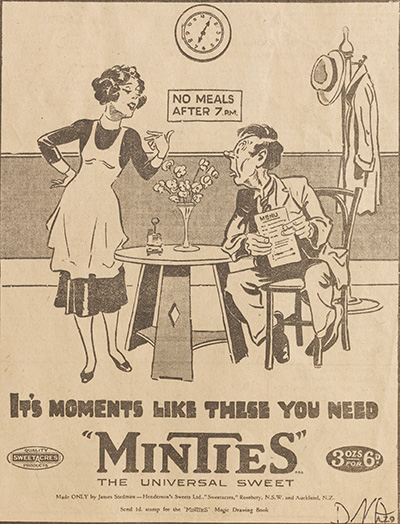
Plant presses over time. H.H. Finlayson’s parcel of plants for J.M.Black, 1934 (top). Ray Alcock’s travel press, 1970s (middle). A modern day press with nylon straps and metal mesh for the top and bottom (bottom).
One of the best and time-honoured ways to flatten and dry a plant specimen is to press it between the pages of newspaper — newspaper is durable, absorbent, dries quickly, is easy and cheap to come by and if kept dry lasts a very long time. Botanists have been using newspaper for pressing plants as their technique of choice for hundreds of years and continue to use it to this day (Qld Herbarium brochure, 3.4mb PDF).
Since the State Herbarium of South Australia opened in 1954, hundreds of thousands of plant specimens with their newspaper counterparts have been submitted to the collection (we have over a million specimens in our collection currently). Many specimens were even collected earlier than the official opening.
For example, the State Herbarium has six parcels of plants in its collections that were prepared by H.H. Finlayson in 1934 and identified by botanist John McConnell Black, the author of the first Flora of South Australia. The top photo on the right shows one of the parcels, still in the same condition, as when they were removed from the plant press, and neatly wrapped with twine. We are planning to unwrap them in the near future.
The State Herbarium also cares for artefacts from previous South Australian botanists, such as Ray Alcock’s travel press that he used in the 1970s. Charles Raymond Alcock was one of the State Herbarium’s prolific collectors. He turned his attention to plants, specifically weeds, in the 1950s. Plants and nature conservation became his passion until his death in 2015 (see orbituary in the ASBS Newsletter; 3.6mb PDF).
In most cases, when a plant specimen is filed into the collection it is mounted on archival paper, placed in archival folders and the newspaper originally holding the specimen is thrown away. However, sometimes the newspaper stays with the specimen, for instance there might be excess material that can be sent to other herbaria as duplicates, or it might be a long time between the collection being accepted and it finally being mounted. So naturally, when working with specimens, staff, volunteers and researchers from around the world come across old newspapers and on occasion have been known to take a moment for a good read.
 Being natural collectors and curators it is common for herbarium workers to save articles of interest for their own reference or general awareness. For example, Ray Alcock also kept a diary of newspaper clippings.
Being natural collectors and curators it is common for herbarium workers to save articles of interest for their own reference or general awareness. For example, Ray Alcock also kept a diary of newspaper clippings.
Here are a few examples of articles found in our Herbarium recently which we would like to share with you, in acknowledgment of History Month. Also to appreciate the inadvertent history held within the State Herbarium of South Australia and no doubt many other herbaria worldwide.
These first few articles are from the Adelaide Advertiser, between 1915 to 1917, some collected by Ray Alcock, focusing on issues such as climate change, agricultural prospects and even recruitment for soldiers in World War 1 (click on the image to enlarge).
These snapshots allow appreciation of the culture and literature at that time. The snippets also highlight an unusual role of our collections which include herbaria being custodians of many aspects of our history. These insights into the past, random and unintentional, but charming and informative, also make us aware of the important long term nature of collections, such as those in the State Herbarium.
As a resource for plant specimen collectors, the convenience of newspaper these days is becoming problematic, as social media and the internet take over. At times, the State Herbarium has run low on newspaper stock, since less people put them aside and donate. Although this isn’t of critical concern currently, eventually we will need to consider how to process plant pressings in the future.
Contributed by State Herbarium staff Chelsea Novice and Graham Bell.




